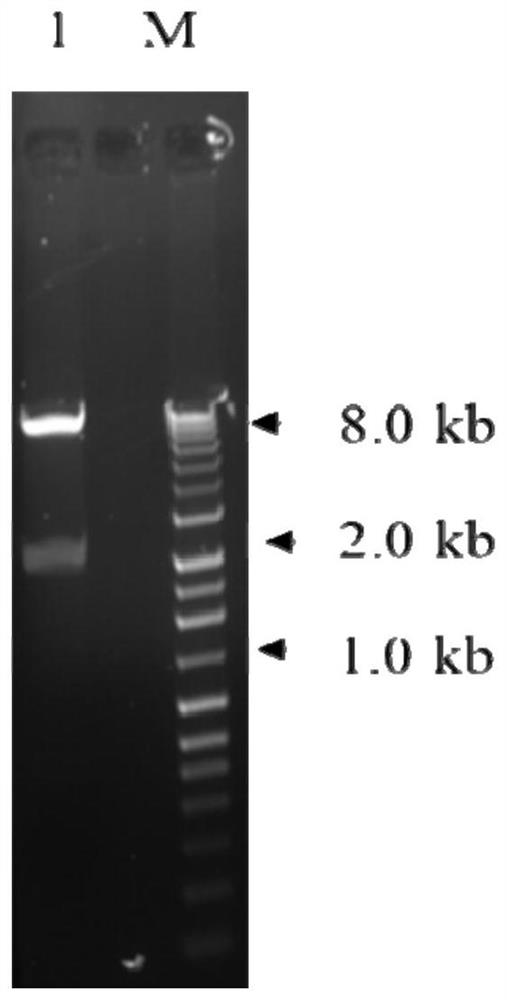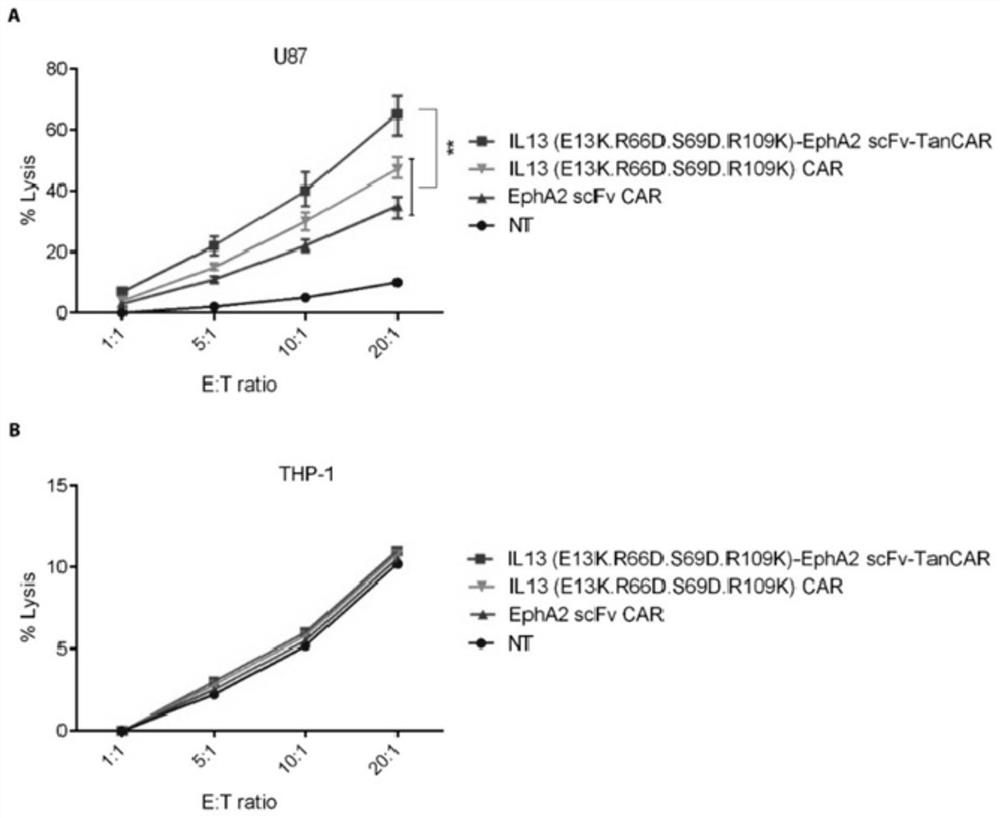Construction and application of TanCAR
A technology of E13K.R66D.S69D.R109K and extracellular segment, which is applied in the field of CART therapy and can solve problems such as specificity needs to be improved
- Summary
- Abstract
- Description
- Claims
- Application Information
AI Technical Summary
Problems solved by technology
Method used
Image
Examples
Embodiment Construction
[0036] This example presents a TanCAR, which is constructed on the basis of the third-generation CAR backbone. The extracellular segment of the TanCAR that recognizes the target molecule on the surface of the target cell consists of IL13 in the base sequence shown by NO1 in the nucleotide sequence table. (E13K.R66D.S69D.R109K) mutant nucleic acid sequence and EphA2 scFv nucleic acid sequence with the optimized restriction enzyme cleavage site shown in the base sequence shown in NO2 in the nucleotide sequence table and the addition of linker, wherein, IL13 (E13K. The R66D.S69D.R109K) sequence is located at the 5' end of the extracellular segment that recognizes the target molecule on the surface of the target cell, and the EphA2scFv sequence is located at the 3' end of the extracellular segment that recognizes the target molecule on the target cell surface. Nucleic acid sequence spacing.
[0037] The construction method of the above TanCAR, the steps are as follows:
[0038] 1...
PUM
 Login to View More
Login to View More Abstract
Description
Claims
Application Information
 Login to View More
Login to View More - R&D
- Intellectual Property
- Life Sciences
- Materials
- Tech Scout
- Unparalleled Data Quality
- Higher Quality Content
- 60% Fewer Hallucinations
Browse by: Latest US Patents, China's latest patents, Technical Efficacy Thesaurus, Application Domain, Technology Topic, Popular Technical Reports.
© 2025 PatSnap. All rights reserved.Legal|Privacy policy|Modern Slavery Act Transparency Statement|Sitemap|About US| Contact US: help@patsnap.com



